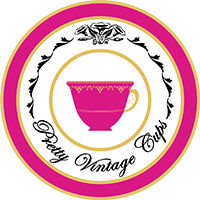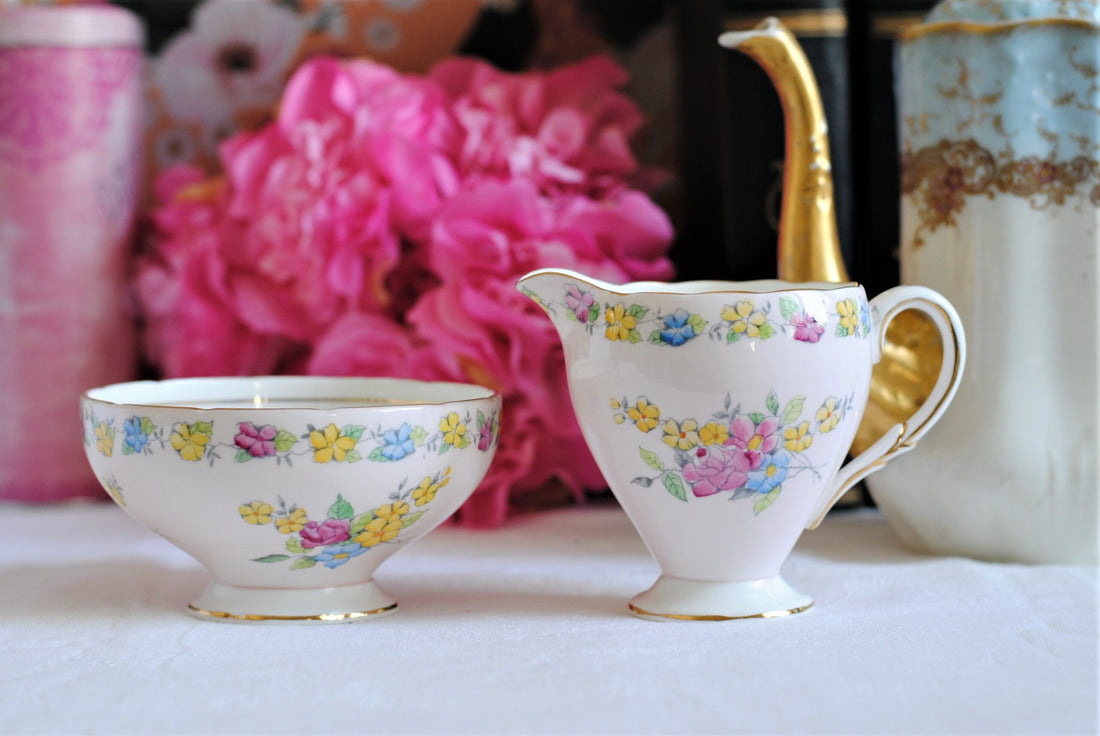There are many words and terminologies used when describing bone china items. To help you understand a little more about bone china and your purchase, we have listed frequent words used throughout the website.
A1 - Highest Grade of Silver plating. Superior quality. The thickness of the silver plating which is usually 30 – 35 Microns.
Antique - China pieces that are 100 years and older.
Art Deco - A decorative arts style popular from 1910 to 1940. Typical characteristics are highly stylised natural geometric and symmetrical forms.
Art Nouveau - Art Nouveau means ‘new arts’. This style of decorative arts was popular between 1890 and 1910.
Bone China - A type of soft past porcelain that is composed of bone ash (40%-45% mainly cow bone) feldspar (minerals) and kaolin (a clay mineral). The firing temperature needs to be high and so it is expensive to produce. Bone china is pure white and can be translucent). The first English firm to develop a reliable recipe was Spode in 1799. (Spode is a pottery company in Stoke-on-Trent in England that was founded by Josiah Spode (1733-1797)
Demitasse - French for “half a cup”. These cups would have been used for a strong black coffee after supper.
Duos - Teacup and saucer.
English Bone China or Bone China - Bone china bearing these words were manufactured in the 20th century.
EP - Electroplate (Silver plating).
EPNS - Electroplate Nickel Silver (Silver plating on nickel).
Fine china - Typically refers to porcelain.
Firing Spots - During the late 1800’s, kilns were fired on wood or coal, and quite often firing specks from flying particles would become embedded in the china. Seeing firing specks on china is good evidence that the piece is genuinely an older piece. Kilns nowadays are much more sophisticated and the firing of china has become superior with new technology.
Limited (Ltd) - The word Limited or Ltd appears after 1860 when a law was passed requiring it to be shown by limited liability companies, although it was being used on some pieces from 1885 onwards.
Made in - Bone china pieces bearing the words “Made in”, as part of the back stamp, were made after 1921.
Made in England - Bone china bearing the words Made in England will date the piece to after 1921.
Matched - Different designs put together to create a teacup set. I.e. the teacup from one design and a saucer from another design are put together to form a set.
Porcelain - Ceramic material made by heating materials, generally including kaolin. It is strong, hard and has a translucence quality.
Pressed Backstamps - Backstamps that are pressed into the item, rather than printed on, indicate an older item, that may date between 1850-1899. By the early 1900’s most backstamps were printed.
Quartet or Quadro - Teacup, saucer, tea plate and cake plate.
Registration numbers - The use of Registration numbers such as Rd No. 10016 began in 1994. There are
some manufacturers who have used registration numbers on older pieces.
Retro - Imitative of a fashion or style from the recent past. Items styled on 1980’s
designed would be considered as ‘retro’.
Royal - The use of the word Royal before a company name tends to be used after 1850.
Slop Bowl - A slop bowl would have been used in earlier times for discarding undrunk cold tea or the tea leaves at the bottom of the teacups
Trade Mark - In 1862, the Trade Mark Act became law. Therefore any piece bearing the words – Trade Mark – can be taken as being made after 1862.
Trio - Teacup, saucer and tea plate.
22KT or 14KT - Pieces gilded with gold in 22KT or 14 KT and marked on the item are likely to be older piece or antique and of value.
Victorian - The Victorian era was the period of Queen Victoria’s reign from 1837 until 1901. China teaware which is Victorian would be from this period.
Vintage - Of high quality and lasting value, with characteristics from the past. Our vintage items date from around 1920 – 1960.

